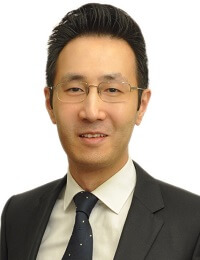Gum grafting is a treatment procedure for gum recession. It is one of the most technically sensitive and surgically demanding treatments in clinical dentistry. The success rate in the literature varies significantly from approximately <10-100%. The reason for this large variation is because gum recession can vary significantly in location, extent and severity. There is also a large diversity of techniques available and clinician’s experience.
In the first part of my blog post on gum grafting, I will go through the causes of gum recession, consequences of gum recession and the types of gum grafting surgical procedures available.
Causes of gum recession
Before proceeding with surgery, it is important to understand the underlying cause(s) of gum recession. Any predisposing or precipitating factors must be first controlled. If not, then recession will most likely continue even after treatment.
These predisposing or precipitating factors can be broadly split into:
- Anatomical – e.g. natarual genetic deficiencies in the bone around a tooth, high inserting intra-oral ligaments (small folds of tissue that restrict movement)
- Physiological – e.g. abnormal tooth position/ tooth shape, orthodontic tooth movements)
- Pathological – e.g. over-zealous tooth-brushing or flossing, intro-oral/ peri-oral piercing, direct trauma from malocclusion, restorative therapy, bacterial plaque induced inflammation (periodontitis), oral infections such as herpetic gingival stomatitis.
- Combinations of the above
Consequences of gum recession
It is important to explore the effects of gum recession for the patient. This will determine what course of treatment is best. An asymptomatic patient with historical gum recession that is stable and without other concerns is unlikely to need treatment.
Common consequences of gum recession that may be treated with surgical intervention include:
- Pain/ hypersensitivity.
- Poor aesthetics.
- Chronic inflammation and plaque retention (plaque control can be more difficult with an altered gingival architecture).
- Root abrasion/ decay.
Gum grafting surgical procedures
Gum grafting and its related surgeries can be broadly split into three categories. The choice of technique depends on the individual clinical scenario and goals of treatment.
Root coverage surgery
The aim of root coverage surgery is to bring the gum recession up to a more aesthetically pleasing level and to achieve a good colour match with the rest of the gums.
Non-root coverage surgery
• Thin gum tissue is delicate, friable and prone to further recession.
• Non-root coverage procedures aim to increase the band of thick gum tissue around an exposed root.
• This will facilitate better oral hygiene, less plaque accumulation, reduce the risk of chronic inflammation and further recession.
• Minimal attempt is made to cover the entire root surface or to get a precise colour/contour match.
Papilla reconstruction
• Reconstruction of the inter-dental papilla and masking dark triangles between the teeth is extremely difficult.
• Currently there is no quick or predictable method of achieving this.
• This is because the height of the overlying soft tissue around a tooth is essentially dependent upon the height of the underlying bone supporting it.
• In cases of inter-dental papilla recession, the inter-dental bone has been lost.
• Often to get a long term, stable result, a combination of gum surgery, significant bone grafting, prosthetic treatment and orthodontics is required.
• Due to the extensive procedures required, costs and risks involved to correct such minor defects we aim to stabilise and prevent further recession, rather than advise minor papilla reconstruction.
• However, papilla reconstruction may be indicated for very significant loss of inter-dental papilla in patients with very high smiles that poses a psychological discomfort.
Combinations of the above
We can also combine procedures, where a thick band of gum tissue was created together with complete root coverage.
In my next blog post, I will share more about the types of grafts and common risks. Stay tuned 😉

Dr Ben Wang is a dental surgeon with postgraduate training in Periodontics. This is a dental specialty that involves the prevention, diagnosis, treatment of gum diseases and the placement of dental implants. Dr Wang received his basic dental training from the University of London, where he also attained an honours degree in Microbiology. He then worked in the private dental sector and hospital dentistry prior to embarking on a three-year full-time Periodontics training program at the Eastman Dental Institute treating patients with a wide range of complex gum diseases. He has completed his examinations with the Royal College of Surgeons of Edinburgh. Dr Wang has interests in the critical appraisal of research, all aspects of gum surgery, bone and soft tissue graft around teeth and implants.





